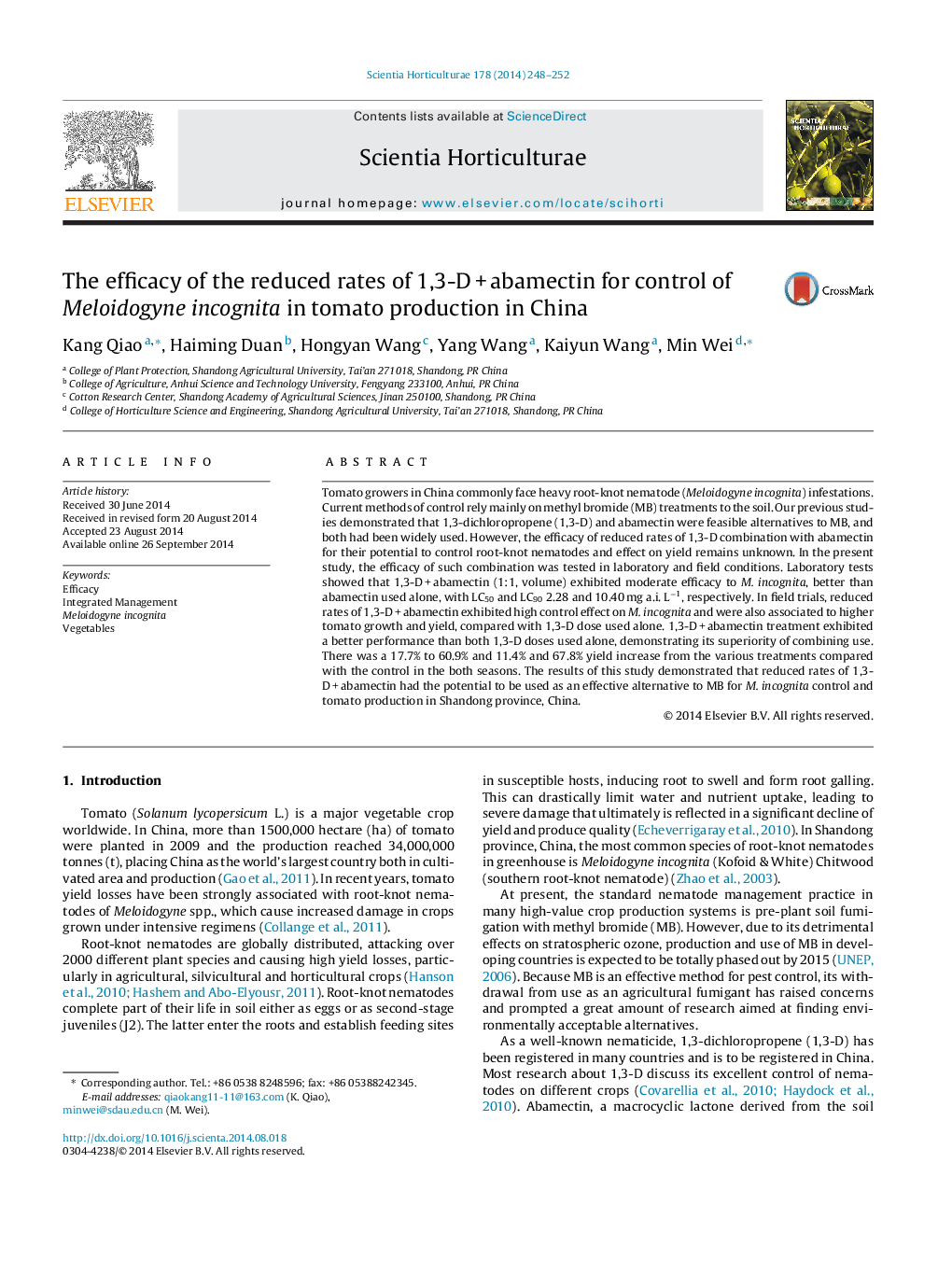| Article ID | Journal | Published Year | Pages | File Type |
|---|---|---|---|---|
| 4566585 | Scientia Horticulturae | 2014 | 5 Pages |
•We provided directions for evaluating the application prospects of 1,3-D + abamectin.•Abamectin applied as an added measure is an attractive approach in tomato.•The use of abamectin could reduce the application amount of 1,3-D.
Tomato growers in China commonly face heavy root-knot nematode (Meloidogyne incognita) infestations. Current methods of control rely mainly on methyl bromide (MB) treatments to the soil. Our previous studies demonstrated that 1,3-dichloropropene (1,3-D) and abamectin were feasible alternatives to MB, and both had been widely used. However, the efficacy of reduced rates of 1,3-D combination with abamectin for their potential to control root-knot nematodes and effect on yield remains unknown. In the present study, the efficacy of such combination was tested in laboratory and field conditions. Laboratory tests showed that 1,3-D + abamectin (1:1, volume) exhibited moderate efficacy to M. incognita, better than abamectin used alone, with LC50 and LC90 2.28 and 10.40 mg a.i. L−1, respectively. In field trials, reduced rates of 1,3-D + abamectin exhibited high control effect on M. incognita and were also associated to higher tomato growth and yield, compared with 1,3-D dose used alone. 1,3-D + abamectin treatment exhibited a better performance than both 1,3-D doses used alone, demonstrating its superiority of combining use. There was a 17.7% to 60.9% and 11.4% and 67.8% yield increase from the various treatments compared with the control in the both seasons. The results of this study demonstrated that reduced rates of 1,3-D + abamectin had the potential to be used as an effective alternative to MB for M. incognita control and tomato production in Shandong province, China.
Graphical abstractFigure optionsDownload full-size imageDownload as PowerPoint slide
